Process automation
Instructor: Antonio Pietrabissa
Course web page: https://sites.google.com/a/dis.uniroma1.it/antonio-pietrabissa/home-page-en/teaching
Credits: 6
Infostud code: 1041422
Objectives
The course aims at providing a background on Process Control concepts and control methodologies, such as Internal Model Control and Model Predictive Control, and at applying them to suitably modeled industrial process examples. The students will be able to understand and to apply Internal Model Control methodologies and basic Model Predictive Control methodologies with specific reference to process control problems.
Program
Process control overview. Significance of process control. Objectives. Levels of process control. Process dynamics and mathematical models. Regulatory control. Control system design. Multivariable control. Batch process automation. Automation and process safety.
Dynamic models for process control.
Classic process control. Internal Model Control (IMC). Robust IMC for linear systems. PID tuning with IMC. Linear time-delay systems and time margin. Smith Predictor. Robustness to time delay mismatches.
Introduction to Model Predictive Control. The Model Predictive Control (MPC) principle. Relevance of MPC in current industrial process automation.
Model Predictive Controllers. MPC elements: prediction model, objective function, control law. MPC algorithms: Dynamic Matrix Control, Model Algorithmic Control, Predictive Functional Control.
Stability results for MPC.State space formulation. Stability via Lyapunov arguments.
Type of exam: Written test, Oral test
Reference texts
- Dale E. Seborg, Thomas F. Edgar, Duncan A. Mellichamp, "Process Dynamics and Control," Wiley, 2nd ed., 2003, ISBN 978-0471000778
- Daniel E. Rivera, "Internal Model Control: A Comprehensive View", Arizona State University, 1999
- Eduardo F. Camacho, Carlos Bordons Alba, "Model Predictive Control," Series: Advanced Textbooks in Control and Signal Processing, XXII, 2nd Ed., 2004, ISBN 978-0-85729-398-5
- Lecture notes by A. Pietrabissa

